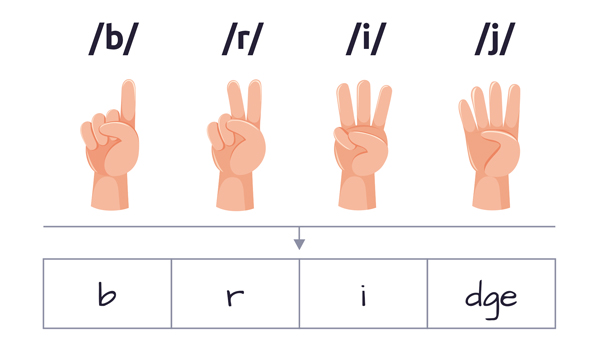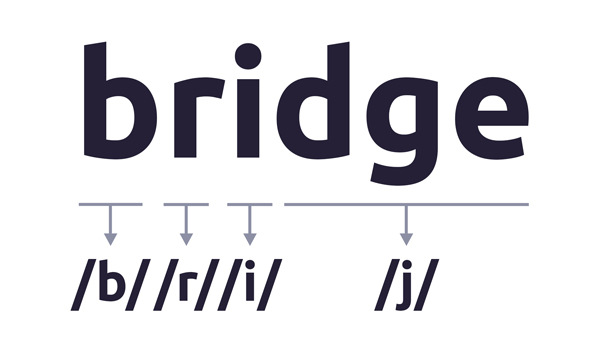Articles & Videos
The four key areas of teaching spelling
Categories
Subscribe to our newsletters
Receive teaching resources and tips, exclusive special offers, useful product information and more!
The four key areas of teaching spelling
Sound Waves Literacy 28/5/21

Spelling is a complex skill that requires systematic and explicit instruction. Four key areas of teaching spelling are phonemic awareness, synthetic phonics, morphology and etymology. Let’s take a look at what each area involves, and why it is important.
Phonemic awareness
What is phonemic awareness?
Phonemic awareness is the ability to work with phonemes. It consists of a number of skills taught in a sequence that progresses from easier to more difficult:
| Skill | Example |
|---|---|
| isolation | What is the first sound in sit? What is the last sound in sit? What is the middle sound in sit? |
| blending | What word do these sounds make when you put them together: /s/ /i/ /t/? |
| segmenting | What are the sounds in sit? |
| manipulation | What word is sit without the /s/? What word do you get if you change the /s/ in sit to a /b/? |
Why is phonemic awareness instruction important?
Understanding that spoken language is made up of phonemes is a prerequisite for learning to read and spell. Research has repeatedly identified a positive correlation between phonemic awareness and later reading and spelling success (Kenner et al., 2017).
Synthetic phonics
What is synthetic phonics?
Synthetic phonics is a method of teaching phonics which involves explicitly and systematically introducing students to phoneme–grapheme relationships.
To spell a word, students are taught to segment the word into phonemes and assign a grapheme to represent each phoneme.

To read a word, students are taught to identify the graphemes within the word, assign a phoneme to each grapheme and then blend the phonemes together to form the word.

Why is synthetic phonics instruction important?
To become proficient readers and spellers, students must be systematically and explicitly taught the connections between phonemes and graphemes (National Reading Panel, 2000). Synthetic phonics is the most systematic and explicit method for teaching these connections, and has been shown to be more effective than alternative methods such as analytic phonics (Johnson & Watson, 2012).
Morphology
What is morphology?
Morphology is knowledge of the meaningful parts of words: prefixes, suffixes, and Greek and Latin roots. Morphology instruction involves teaching students to identify and spell these word parts.
For example, students learn that the suffix ful can mean full of or having, and that it’s consistently spelled ful. Once students learn this, misspellings such as thankfell, thankfool or thankfull are less likely to occur and students will be better equipped to understand the meaning of new words with the suffix, such as regretful, meaningful and doubtful.
Morphology instruction also includes teaching the processes involved in adding suffixes to words. For example, students learn that if a word ends with a consonant then y, we usually change the y to i before adding a suffix. Understanding and applying this process is critical for correctly spelling words such as cried, luckily and happiest.
Why is morphology instruction important?
About 80 per cent of words in the English language have more than one meaningful part (Castles et al., 2018). Explicitly teaching prefixes, suffixes and Greek and Latin roots ensures students are equipped to understand the meaning and spelling of morphologically complex words (Goodwin & Ahn, 2013).
Etymology
What is etymology?
Etymology is an understanding of word origins and history. Teaching etymology involves telling the ‘story’ of a word to explain its spelling and meaning. Examples of concepts covered in etymology instruction include:
- Standard Australian English includes many words from Aboriginal and Torres Strait Islander languages. For example, koala and wombat are from the language of the Dharug people of the Western Sydney and Blue Mountains region in New South Wales.
- Many words originating from French use ch to represent /sh/, such as chef, chandelier and parachute.
- Portmanteaus are words that are formed by combining two words. For example, podcast comes from iPod and broadcast.
Why is etymology instruction important?
The English we speak today has developed from several languages, including Indigenous Australian languages, Anglo-Saxon (Old English), French, Latin and Greek. The meaning and spelling of many words can be explained by links to these languages.
The four key areas of spelling instruction provide students with the knowledge and skills they need to become proficient readers and writers.
References
Castles, A., Rastle, K., & Nation, K. (2018). Ending the reading wars: Reading acquisition from novice to expert. Psychological Science in the Public Interest, 19(1), 5–51. https://doi.org/10.1177/1529100618772271
Goodwin, A & Ahn, S. (2013). A meta-analysis of morphological interventions in English: Effects on literacy outcomes for school-age children. _Scientific Studies of Reading._17(4), 257–285. https://doi.org/10.1080/10888438.2012.689791
Johnston, R. S., McGeown, S., & Watson, J. E. (2012). Long-term effects of synthetic versus analytic phonics teaching on the reading and spelling ability of 10 year old boys and girls. Reading and Writing, 25(6), 1365–1384. https://doi.org/10.1007/s11145-011-9323-x
Kenner, B. B., Terry, N. P., Friehling, A. H., & Namy, L. L. (2017). Phonemic awareness development in 2.5- and 3.5-year-old children: An examination of emergent, receptive, knowledge and skills. Reading & Writing, 30(7), 1575–1594. https://doi.org/10.1007/s11145-017-9738-0
National Reading Panel. (2000). Teaching children to read: An evidence-based assessment of the scientific research literature on reading and its implications for reading instruction. National Institute of Child Health & Development. https://www.nichd.nih.gov/sites/default/files/publications/pubs/nrp/Documents/report.pdf